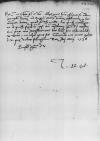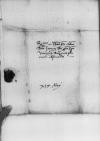List #3650
Tiedemann GIESE do Ioannes DANTISCUSs.l., 1538-05-16
| odebrano [1538]-05-19 Rękopiśmienne podstawy źródłowe:
| ||||
Tekst + aparat krytyczny + komentarzZwykły tekstTekst + komentarzTekst + aparat krytyczny
Reverendissimo in Christo Patri et Domino, domino
Reverendissime in Christo Pater et Domine.
Aliis meis litteris oblitus sum addere exemplum litterarum ad
Commendo me amori Reverendissimae Dominationis Vestrae, quae valeat felicissime.
Datae XVI Maii 1538.
Eiusem Reverendisimae Dominationis Vestrae

